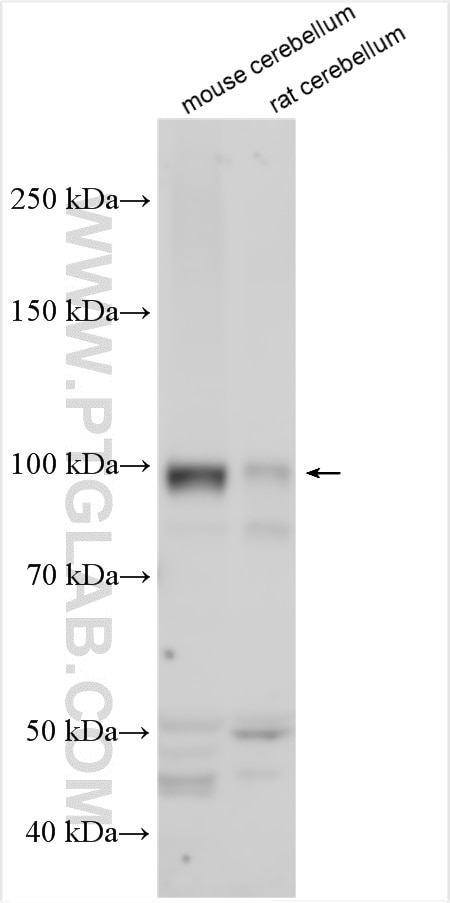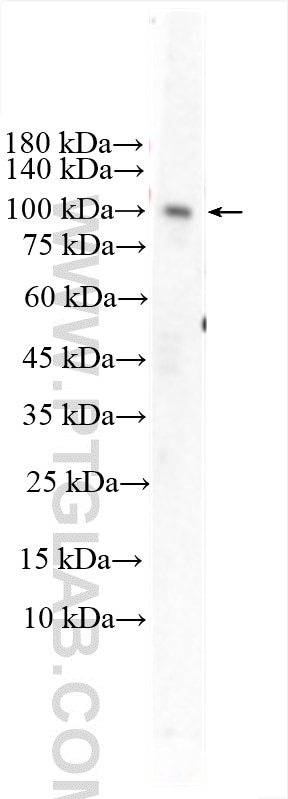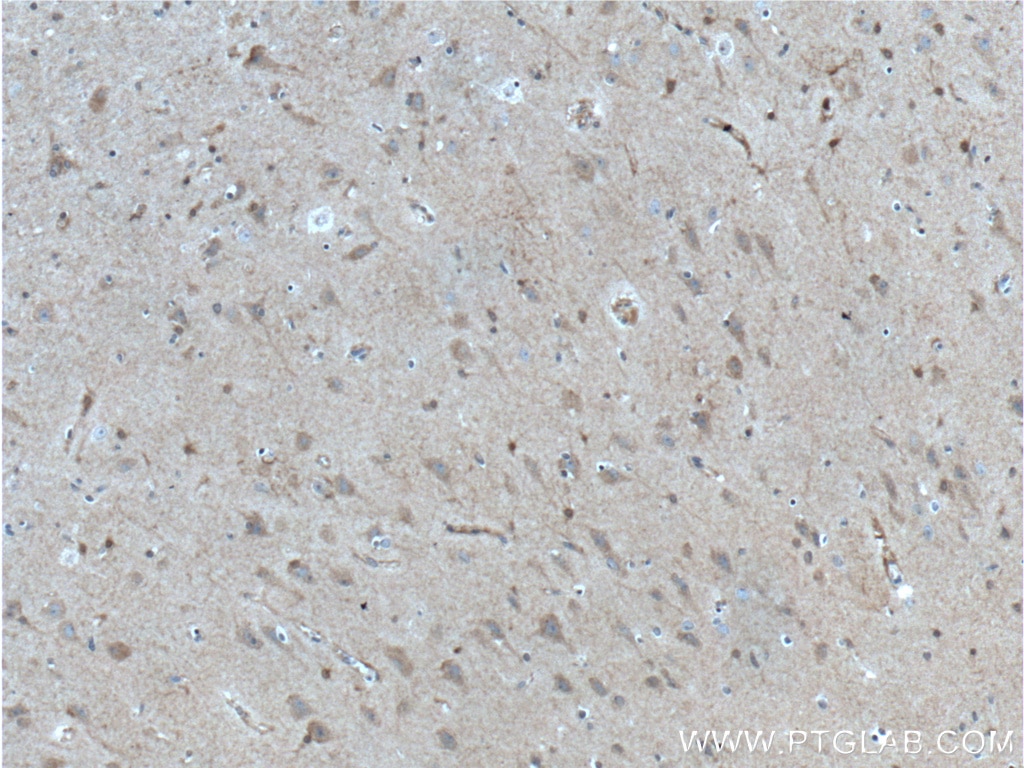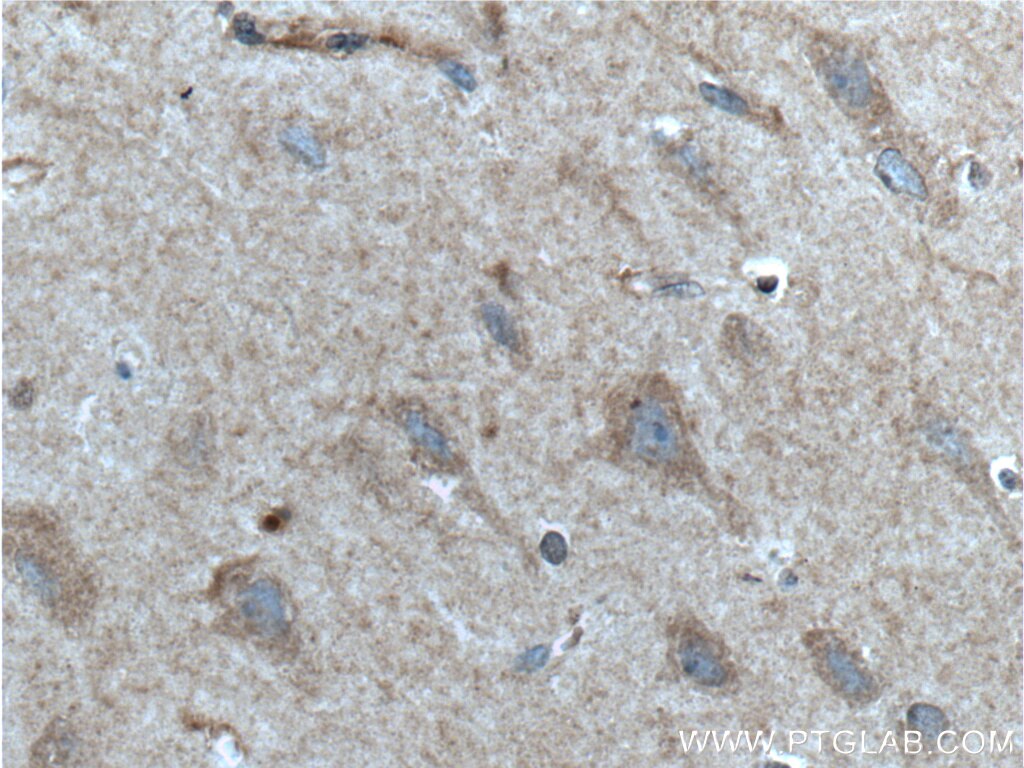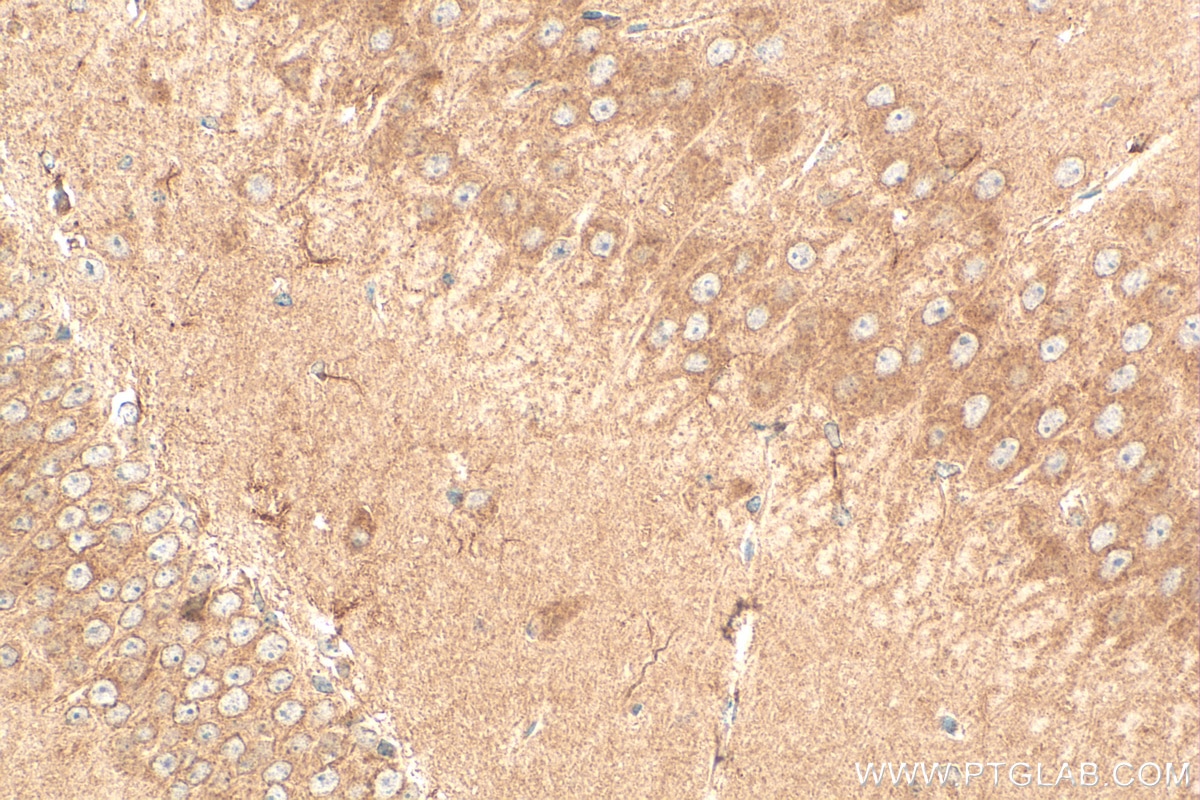Anticorps Polyclonal de lapin anti-GRIA1
GRIA1 Polyclonal Antibody for WB, IHC, ELISA
Hôte / Isotype
Lapin / IgG
Réactivité testée
Humain, rat, souris
Applications
WB, IHC, IF, ELISA
Conjugaison
Non conjugué
N° de cat : 25012-1-AP
Synonymes
Galerie de données de validation
Applications testées
| Résultats positifs en WB | tissu de cervelet de souris, tissu de cervelet de rat |
| Résultats positifs en IHC | tissu cérébral humain, tissu cérébral de souris il est suggéré de démasquer l'antigène avec un tampon de TE buffer pH 9.0; (*) À défaut, 'le démasquage de l'antigène peut être 'effectué avec un tampon citrate pH 6,0. |
Dilution recommandée
| Application | Dilution |
|---|---|
| Western Blot (WB) | WB : 1:500-1:2000 |
| Immunohistochimie (IHC) | IHC : 1:50-1:500 |
| It is recommended that this reagent should be titrated in each testing system to obtain optimal results. | |
| Sample-dependent, check data in validation data gallery | |
Applications publiées
| WB | See 4 publications below |
| IHC | See 1 publications below |
| IF | See 1 publications below |
Informations sur le produit
25012-1-AP cible GRIA1 dans les applications de WB, IHC, IF, ELISA et montre une réactivité avec des échantillons Humain, rat, souris
| Réactivité | Humain, rat, souris |
| Réactivité citée | rat, souris |
| Hôte / Isotype | Lapin / IgG |
| Clonalité | Polyclonal |
| Type | Anticorps |
| Immunogène | GRIA1 Protéine recombinante Ag21502 |
| Nom complet | glutamate receptor, ionotropic, AMPA 1 |
| Masse moléculaire calculée | 906 aa, 102 kDa |
| Poids moléculaire observé | 100 kDa |
| Numéro d’acquisition GenBank | BC111734 |
| Symbole du gène | GRIA1 |
| Identification du gène (NCBI) | 2890 |
| Conjugaison | Non conjugué |
| Forme | Liquide |
| Méthode de purification | Purification par affinité contre l'antigène |
| Tampon de stockage | PBS with 0.02% sodium azide and 50% glycerol |
| Conditions de stockage | Stocker à -20°C. Stable pendant un an après l'expédition. L'aliquotage n'est pas nécessaire pour le stockage à -20oC Les 20ul contiennent 0,1% de BSA. |
Informations générales
Glutamate receptors are the predominant excitatory neurotransmitter receptors in the mammalian brain and are activated in a variety of normal neurophysiologic processes. These receptors are heteromeric protein complexes with multiple subunits, each possessing transmembrane regions, and all arranged to form a ligand-gated ion channel. The classification of glutamate receptors is based on their activation by different pharmacologic agonists. This gene belongs to a family of alpha-amino-3-hydroxy-5-methyl-4-isoxazole propionate (AMPA) receptors.
Protocole
| Product Specific Protocols | |
|---|---|
| WB protocol for GRIA1 antibody 25012-1-AP | Download protocol |
| IHC protocol for GRIA1 antibody 25012-1-AP | Download protocol |
| Standard Protocols | |
|---|---|
| Click here to view our Standard Protocols |
Publications
| Species | Application | Title |
|---|---|---|
Food Chem Toxicol Melatonin attenuates BDE-209-caused spatial memory deficits in juvenile rats through NMDAR-CaMKⅡγ-mediated synapse-to-nucleus signaling | ||
Biomed Chromatogr Revealing the optimal traditional processing methods and its protective effects against febrile seizures of Arisaema cum bile | ||
Cells Treadmill Exercise Facilitates Synaptic Plasticity in APP/PS1 Mice by Regulating Hippocampal AMPAR Activity | ||
Behav Pharmacol Hesperidin produces antidepressant effects by activating AMPA receptor: enhancing synaptic proteins to promote hippocampal neuronal activities | ||
J Ethnopharmacol Iridoids from Gardeniae fructus ameliorates depression by enhancing synaptic plasticity via AMPA receptor-mTOR signaling |
